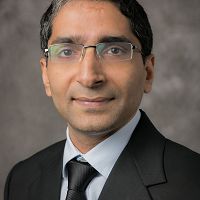Kumar et al., 2017
Intercomparing model configurations with varied erosion, deposition and transport representations for simulating sediment yield
Kumar, Mukesh, Tan Zi, John D Albertson (2017)
American Geophysical Union 2017 Fall Meeting, New Orleans, Louisiana, 11-15 December 2017
-
Calhoun, INVESTIGATOR
Abstract
Over the past several decades there has been enormous proliferation of sediment models, ranging from empirical to physically-based. Most of these models aim to capture the impacts of three primary sediment processes viz. erosion, deposition, and transport. As these processes are captured using a wide range of representations, it is natural to wonder about their influence on estimates of suspended sediment yield from a watershed. While several studies have focused on inter-comparison of sediment models, their scope have generally been restricted to comparing the individual model performances, rather than understanding the role of process representations on sediment model output. Here we consider six model configurations, that span the different permutations of erosion, deposition and transport processes being used in extant models, to evaluate the role of process representations on sediment yield estimates. The numerical experiments are designed to evaluate the extent to which the sediment dynamics as modeled by a physically-based model with coupled surface-subsurface hydrologic interactions, are captured by simpler models. Our results show that the choice of model used for simulating soil moisture and runoff volume and peak, characterization of the feedback of soil moisture on soil cohesion, and the process representations used to relate flow property to sediment dynamics, can significantly influence the sediment model performance.
Citation
Kumar, Mukesh, Tan Zi, John D Albertson (2017): Intercomparing model configurations with varied erosion, deposition and transport representations for simulating sediment yield. American Geophysical Union 2017 Fall Meeting, New Orleans, Louisiana, 11-15 December 2017.
Explore Further

